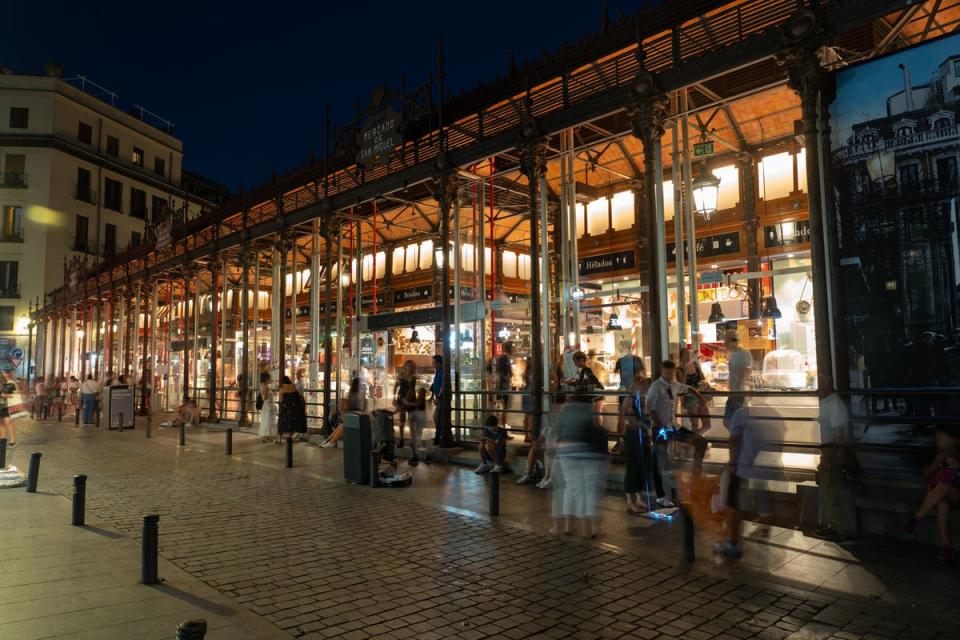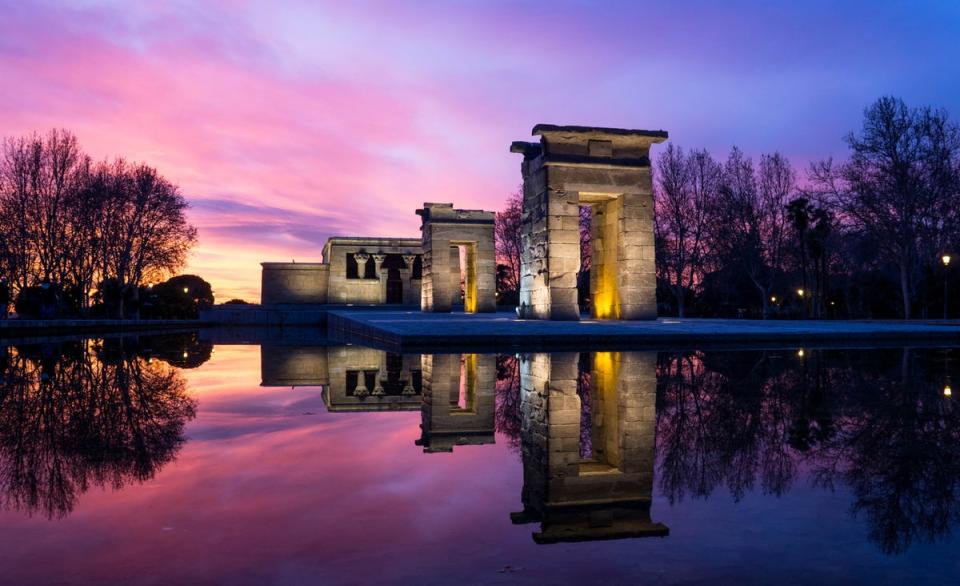10 of the best things to do in Madrid

Despite it being the capital, tourists often end up choosing the beaches of Mallorca or cities like Barcelona and Seville over a visit to Madrid.
But Spain’s vibrant capital city contains a wealth of culture, history and tradition, as well as a variety of things to see and do that many cities could only dream of matching.
Whether it’s world-renowned artworks and beautiful green spaces or grandiose architecture from bygone eras that you want from an urban break, Madrid has it in abundance.
Its historic landmarks illustrate Spain’s rich history, while distinctive neighbourhoods retain a sense of the past while carving their own reputations in the present.
Tapas taverns, centuries-old drinking spots and a variety of theatrical, musical and sporting performances add to Madrid’s comprehensive offering.
Unsure where to start? We’ve collated a list of the best things to see and do.
Wander the historic centre

Madrid’s historic centre is arguably the city’s most delightful district. It stretches roughly from the Puerta del Sol, one of Madrid’s busiest public squares, across to the Royal Palace, the official residence of the royal family, where two-hour tours are available for €24, and many tourists spend hours wandering its gardens in the Campo del Moro park.
In between you’ll find a series of wide avenues that meet narrow cobblestone streets and magnificent squares such as the Plaza Mayor, one of the enduring symbols of the city. Sit here for a quick drink to admire ochre-hued 17th-century architecture and the frescoes of this epicentre of madrileno life, before a quick stop at the Almudena, Madrid’s signature cathedral, and its crypt.
Read more on Spain travel:
Dine at a local market or the oldest restaurant in the world

Why not grab a meal while you’re in the historic centre? Eating at the glass-fronted Mercado de San Miguel is a true locals’ activity and that’s a treat for the tastebuds. More than 30 stalls serve a variety of cuisine, from desserts and sandwiches to small paella plates and a croquette-only stand. Prices are affordable enough –and dishes appropriately sized – that you can sample more than one before you’re full, so be sure to do a lap before deciding.
It’s also worth visiting the Sobrino de Botin, featured in Guinness World Records as the longest continuously operating restaurant in the world. Mentioned in Hemingway novels and briefly worked in by artist Francisco de Goya, this underground tavern – often referred to as simply ‘Botin’ – offers a range of traditional meat and fish dishes, many of which it has been cooking in the same style since 1725, without an ounce of pretentiousness.
See Spain’s most impressive art collections

The three galleries of El Prado, the Reina Sofia and the Thyssen-Bornemisza are known as the Golden Triangle and contain some of Spain’s most famous pieces, as well as work of other famed artists. They lie within 10 minutes of each other on foot, and a combination pass covering a visit to each one can be purchased for €32.
The Prado is the most celebrated museum, containing rooms dedicated to beloved Spanish artists including Goya and Velazquez, and works from a range of Italian, French and Flemish artisits. The Reina Sofia focuses on Spanish art across its 20,000 works, exhibiting Miro, Dali and Picasso’s masterpiece, Guernica. The Thyssen-Bornemisza covers more overarching Western art across its 775 works, from Van Gogh to Pop Art from the 1960s.
Stroll through the Retiro Park

When you’re finished in the Golden Triangle, take a wander around the Buen Retiro Park. It sits just five minutes from the Prado, covering almost 300 acres of ground that used to be reserved solely for the royal family.
This vast space of landscaped gardens contains a number of alfresco cafes and a large boating lake often filled with couples and friends enjoying a relaxing row. The highlight is probably the Palacio de Cristal, an eccentric glass and metal palace built in 1887. El Retiro’s most photographed sight, it overlooks its own smaller lake, teeming with local birds and ducks, and sometimes hosts exhibitions.
See Spain’s Egyptian Temple

One of Madrid’s – and indeed Spain’s – most unique landmarks is actually a temple dedicated to the Egyptian gods Amun and Isis. It is one of few ancient Egyptian monuments that stands outside of Egypt, tracing its origins back 2,200 years.
Gifted to Spain by the Egyptian government as a thank you for its help in restoring other temples, it sits not far from Gran Via and offers free entry for a maximum of 20 minutes. The temple itself is surrounded by placid pools and gardens, and visitors can see the rooms inside, including the Adijalamani Chapel, the oldest part of the temple whose walls are adorned with relief sculptures.
Go shopping on the Gran Via

Gran Via is the beating heart of modern Madrid: a grand boulevard lined with impressive early 20th-century architecture, including some of the city’s most well-known buildings, such as the Edificio Carrion and the Telefonica building. Always filled with locals and souvenir- or bargain-hunting tourists, it gives a great insight into daily madrileno life, with a dose of Oxford Street-esque grandeur and busyness.
This is the city’s most commercialised area, where you’ll find all the international brands and Spanish favourites, so it’s the best area to flock to for retail therapy. It’s also home to excellent hotels, rooftop bars, cultural events – from theatre to flamenco – and restaurants, from international chains to independent tapas bars.
Explore the neighbourhoods

To dig deeper into madrileno life, make an effort to visit the Malasana, Chueca, Lavapies or La Latina neighbourhoods, all of which are within 15 minutes of the centre.
The first is perhaps the best-known of Madrid’s ‘other’ neighbourhoods, as it is the city’s nightlife hub, where a vast array of clubs and bars are centred around the Plaza Dos de Mayo. LGBTQ-friendly Chueca, where a pride festival marks the unofficial start of summer each year, is a mazy network of streets, lined with alfresco cafes and terraces, that all seem to lead to Plaza de Chueca.
Lavapies is Madrid’s most cosmopolitan barrio, where tapas bars sit alongside restaurants that offer all sorts of world cuisine and the streets are filled with colourful street art and the odd live music or dance performance throughout the day. La Latina, just southwest of the centre, is the city’s oldest neighbourhood, where labyrinthine medieval streets house characterful tapas bars and watering holes.
See the world’s premier football team

Though England may be the historical home of football, Spain certainly holds a claim to being the present-day home of it. This is largely due to the presence of Real Madrid, the world’s most successful football club and a true stalwart of the sporting world. When one legendary player leaves they simply produce two more, and if visiting the city between August and May you have the chance to see the next players carving themselves into football folklore, one Champions League trophy at a time, at Santiago Bernabéu Stadium.
Take in the city’s best views

There are dozens of ways to get a great view in Madrid, from the standard city views afforded by a range of rooftop bars to the spectacular vistas available from the Teleferico, a cable car 40 metres above ground. This journey covers 2.5km from the Parque del Oeste, with views over the city to east.
More central viewpoints include Montana del Principe Pio, one for sunsets and views of the Royal Palace, while the viewing deck at the Plaza de Cibeles, present-day home of the city council, gives a great view of the surrounding area and Retiro Park for just €3.
In addition, there are plenty of rooftop bars for amazing views over the city centre. On and around Gran Via, the rooftops of the El Corte Ingles Callao and the Circulo de Bellas Artes provide sweeping views of some of the city’s most distinctive landmarks (with the added bonus that you can enjoy a cocktail with the view).
Browse El Rastro market

The city’s oldest market is also its most famous, and the largest in Europe. It takes place every Sunday from around 7am on the Ribera de Curtidores, where dozens of stalls sell everything from trinkets and handicrafts to vintage clothing, jewellery and photos.
If you’re patient, there are bargains to be found throughout – it wouldn’t attract so many visitors if not – but many guides warn to beware of pickpockets as you search for a great deal.
Read our reviews of the best Spain hotels


